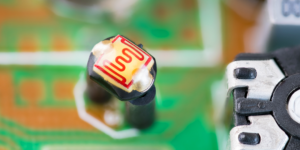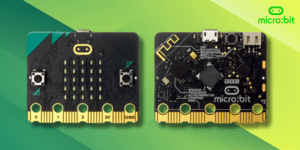Spis treści:
Optical sensors perform tasks ranging from counting and positioning to non-contact detection. Basically, optical sensors work by converting light rays into electronic signals, which are then encoded by integrated measuring devices. And with sensor optics finding applications in many industries, including healthcare, consumer electronics, commercial manufacturing and production, it means it’s on the upswing and worth learning a little more about.
How do optical sensors work?
Optical sensor
is a device that uses light or other ranges of electromagnetic radiation to measure, detect or monitor certain properties of the environment, objects or substances.
Optical sensors take advantage of phenomena related to the interaction of light with materials, enabling precise measurements of various parameters. Their interiors are different from the type, which we will deal with later. Many optical sensors use a built-in light source that sends electromagnetic radiation toward the object or area to be monitored.
The type of light source depends on the application, for example, it could be an LED or a laser. The light receiver then collects the reflected or transmitted light through the object. It can be a photodetector, photodiode, phototransistor or other component that records the amount of incident light. Lenses that act like mirrors are used to direct or collect light in a certain way.
The whole thing is not without control electronics, and sometimes a microprocessor or integrated circuit. With these more advanced components, the range of operations to be performed expands, for example, data analysis, calibration and communication with other systems.
Types of optical sensors by mode of operation
Pass-through optical sensors
The pass-through sensor system works by using light beams that are received by the receiver from the transmitter – if these light beams are obstructed, blocked or interrupted, the receiver will interpret this as a switching signal, which can then be converted and read out using an integrated measuring device. These popular optical sensors allow large objects to pass through and are capable of measuring the color, reflectance and surface texture of objects. This makes them popular in commercial and industrial settings as a way to count, check and organize in storage.
Reflective (rebound) optical sensors
Unlike through-beam sensors, reflective sensors have both a transmitter and a receiver housed in a single device. The light beam is directed from the transmitter to the receiver via a reflective screen, although the main principle remains the same. When the light beam is interrupted or disturbed by another object, a switching signal appears and the user can read the relevant data from the unit’s integrated measuring device. Advantages of using reflective sensors include stability and ease of reproduction, as the user does not have to worry about positioning the transmitter and receiver, so it is quite easy to achieve repeatable results without any deviation. They are also effective in capturing transparent materials such as glass and objects of different color, texture and size.
Distributed optical reflective sensors
Once again, here we have both transmitter and receiver in one device, but the transmitted light is reflected by the actual object being detected, rather than a separate screen or designated space. The rear part of the reflection sensor is usually more sensitive than the front, so that these devices are sometimes problematic to switch. Regardless of the sensitivity settings chosen, you may find that the sensor is prone to unexpected operations and often misleading readings. Still, reflective sensors are a popular choice in industrial settings because of their relative cost-effectiveness and sensitivity.
Types of optical sensors by task
The division presented is somewhat conventional and depends on the systematics adopted. In the list below, for example, LiDAR, which is gaining in popularity, appears, which is more about how it works. We can make the case a little more specifically when it comes to what the sensor is supposed to detect, or rather: what it is supposed to be used for.
- Light sensors detect the intensity of light in an area. They can be used to monitor lighting levels indoors, regulate lighting according to atmospheric conditions, or detect lighting changes in security systems.
- Related color sensors allow the identification of object colors by analyzing the composition of the spectrum of light reflected from them.They can be found in sorting machines, printers and in color analysis in the food industry.
- Occupancy sensors detect the presence or absence of an object in an area based on the reflection or penetration of light. They are often used in automation and theft prevention systems.
- Measuring the distance to an object based on the time it takes the light to reach the object and return is accomplished by distance sensors. They are increasingly being constructed with LiDAR technology, for example, in distance measuring devices and automotive safety systems.
- Temperature sensors measure temperature based on electromagnetic radiation emitted by objects.
- Biometric sensors use retinas, fingerprints or the distribution of blood vessels for identification.
- Radiation sensors measure the amount of electromagnetic radiation within a certain range – an example is UV sensors.
These are just a few, but such a comprehensive list gives a clear idea of the important role they play in electronics and daily life. There’s nothing stopping you from trying them out in projects using Arduino and Raspberry Pi – all you need is a sensor compatible with I2C, SPI or GPIO interfaces, a little knowledge of the Arduino IDE and an idea of how to implement the project thanks to the sensor data.
How useful was this post?
Click on a star to rate it!
Average rating 0 / 5. Vote count: 0
No votes so far! Be the first to rate this post.







